In this discussion, we’ll talk about burning bark. Subject to tree type, barks burn differently from wood, giving more heat and smoke.
However, if you leave your wood with bark, seasoning could take more time and slow down the burning process.
We’ll discuss the pros and cons of burning bark, its effects on wood, how to remove bark from firewood, and alternative uses.
Can You Burn the Bark?
You may wonder whether you must burn your firewood with or without the bark.
As long as you have fully seasoned wood with low moisture content, you won’t encounter any problem burning the bark.
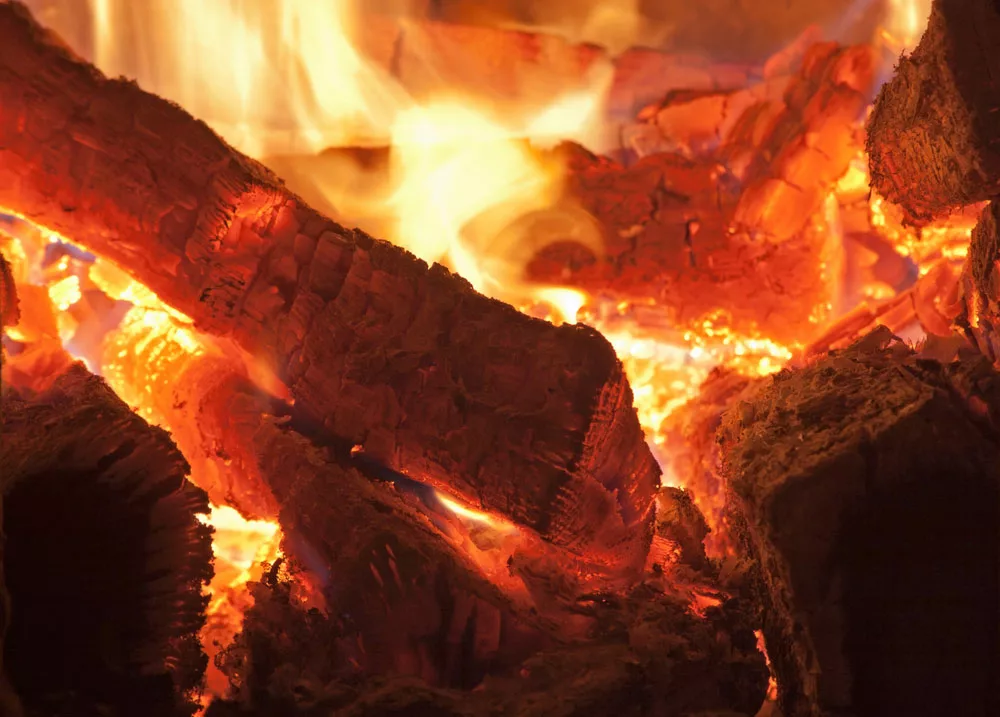
Burning firewood with barks.
Pros and Cons of Burning Bark
Burning bark has its advantages as well as disadvantages.
Pros
It may produce more heat than wood: Some firewood barks, e.g., the Douglas Fir, can have a higher heat output than the wood itself. If you want more heat production, this could be your ideal option.
Uses less effort: Debarking firewood can be cumbersome and require much effort, depending on the tree species. In most cases, people burn firewood with bark rather than debark firewood.
Preventing wastage: We recommend burning your bark with wood instead of throwing away the tree bark. However, this may not be the case if you need to use your bark for other purposes.
Cons
Time-consuming: To produce sufficient heat, you’ll have to spend a decent amount of time collecting bark.
May produce excess creosote: If you burn bark without drying it properly, it may have too much creosote.
Creating a mess: When dealing with firewood around your homestead, barks can be messy and create an unattractive appearance.
May inhibit insects and bugs: Barks may create a living place for small insects and bugs. Furthermore, it could create an undesired breeding place if you store the firewood for extended periods.
May produce more smoke/ash: When burnt, barks have more ash and smoke than wood.
Bark Effects on Wood
Is it Worth Removing all Bark From the Wood?
If the bark is tightly engraved into the wood, it may require a lot more effort to peel it out.
Also, it will significantly increase the time spent cutting, splitting, or stacking firewood.
If your bark peels off the wood quickly, we suggest you remove it before splitting and stacking.
Also, we recommend you cover the wood to protect it if it has no cover.
Should You Stack Firewood Bark Up or Down?
When storing firewood outdoors, we suggest you stack your firewood with the bark on top. It prevents water from accumulating inside the bark.
It is because the bark forms a “u” shape, and when it is at the bottom, it creates a “bowl” that collects rain.
However, when storing firewood under a shelter, you can keep it in any manner.
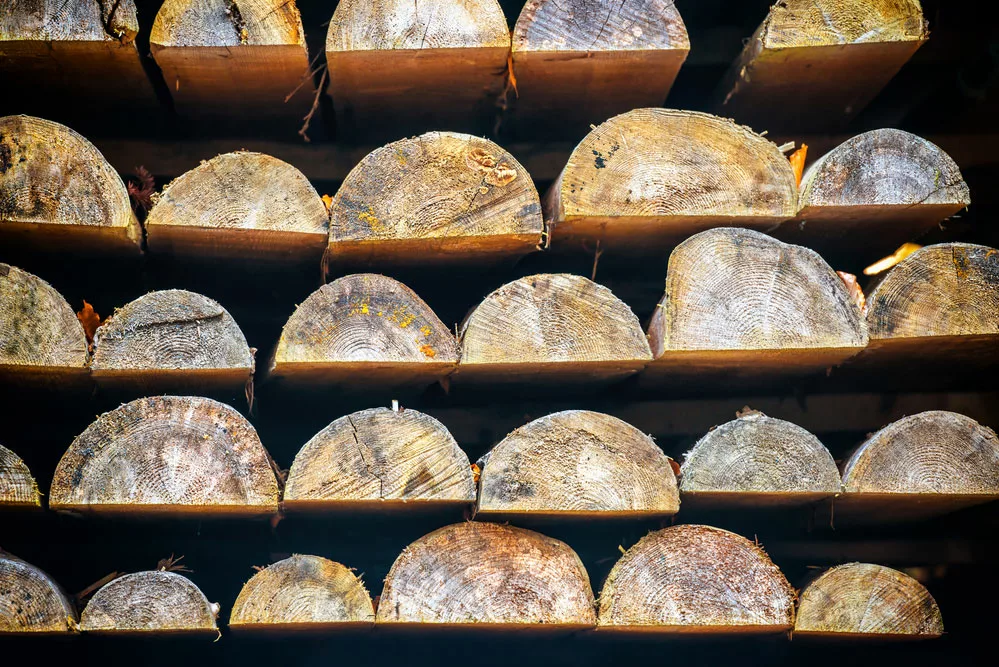
A row of wooden logs stacked with the “u” part Facing upward.
How to Remove Bark From Firewood
If you want to remove bark from wood appropriately, we suggest you use a bark spud. In this case, the Timber Tuff 24” bark spud is an ideal choice. Moreover, it comes with a flat blade for prying the bark.
Debarking Before or After Splitting
Seasoning and debarking your firewood before splitting makes it easier and more convenient.
Specific Operation Method
1. Season it First
Seasoning makes removing the bark from firewood easier, compared to peeling the bark from fresh green wood. Furthermore, seasoning fastens up the drying process of wood.
2. First Try Gloves Only
First, try to peel off the bark with your hands. If it’s easy, it will be faster than using a tool.
However, if the bark is clingy, use a tool.
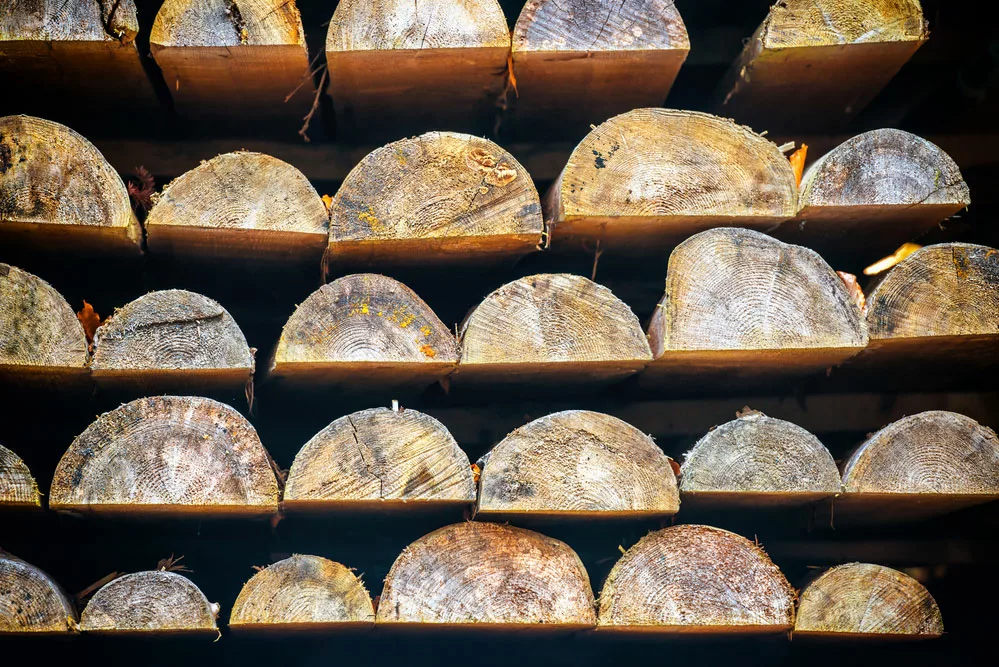
Debarking a wooden log with a debarking machine
3. Use a Hatchet or Bark Spud
You can use your bark spud as an improvised crowbar to create more leverage. In this case, push your tool between the wood and the bark and push off the bark.
Also, you can use a hatchet to chop off the bark. To do this, lay down a large log.
It eases the chopping process and prevents you from driving the hatchet into the dirt.
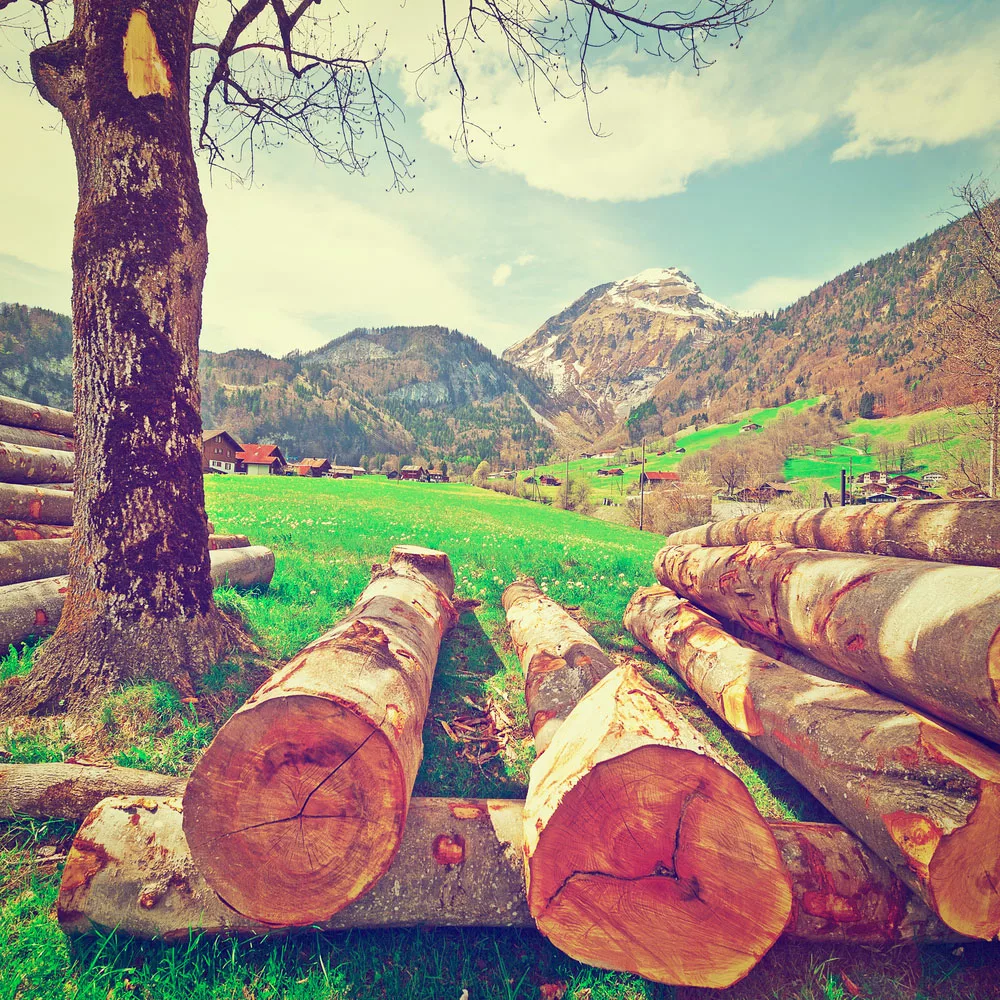
Log laid down for placing the firewood when you want to split.
Are There Other Uses for Bark If I Don’t Burn It?
- Converting it into mulch: If you grind your bark into smaller pieces, you can use them for mulching around flower beds and bushes. They make an excellent ground cover, which prevents weeds.
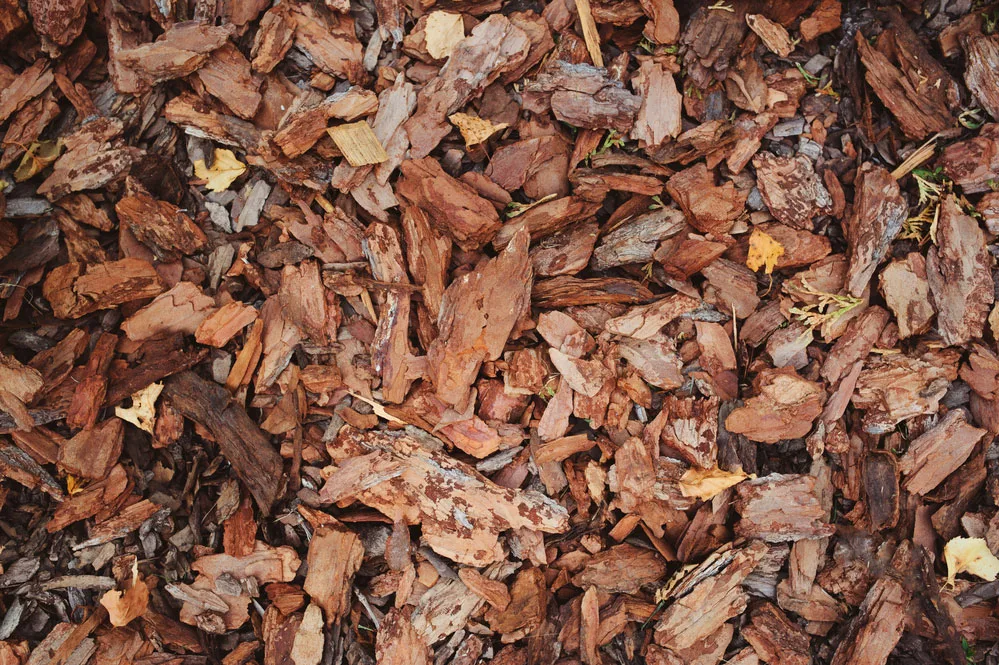
Garden bed mulched with pine bark pieces.
- Animal bedding: We suggest you use ground-up bark for livestock and poultry bedding.
- Kindling: if you want, you can use your bark for kindling to keep your fire on.
- Filling potholes and low areas in the driveway.
Conclusion
Burning bark has its pros and cons, as we have discussed. Also, bark may have alternative uses apart from burning. In case you have any queries about burning bark, please get in touch with us.
